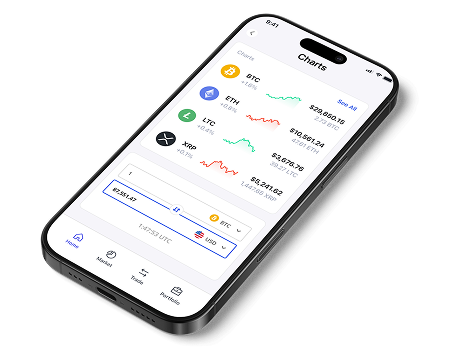What Is a Liquidity Pool and How to Use One
5 min read • December 23, 2024

Introduction
Unless you've been entirely cut off from the world of crypto or bitcoins, you've probably heard of decentralized exchanges. If not, basically these are platforms that allow cryptocurrency trading without relying on centralized intermediaries like traditional exchanges.
At the heart of decentralized exchanges is a fundamental concept: liquidity pools. These pools are critical components of the decentralized finance (DeFi) ecosystem. Additionally, understanding how to integrate stock market data APIs and using tools like a cryptocurrency Data API can also enhance your trading strategies. With such solutions, you can be sure that trading and other financial operations can run smoothly. Let's look at what liquidity pools are, how they work and what role they play in modern cryptocurrency markets.
Contents:
- Liquidity pools: trading and passive income
- Different kinds of liquidity pools
- Fundamentals of how they function
- Assets are introduced to the exchange
- Liquidity tokens are distributed to asset providers
- Trades are conducted in the pool
- Advantages of liquidity pools
- Final thoughts
Liquidity pools: trading and passive income
A liquidity pool is a group of specific crypto coins or tokens that is used to facilitate asset trading on any decentralized market. Currently, the global cryptocurrency market cap is almost $4 billion. And the use of the right tools could help you take advantage of the current uptrend. Applying tech solutions such as a Real-Time Market Data API or Crypto Price Data API with WebSocket integration could help you take advantage of the current uptrend besides the above strategy.
With these pools, you will be capable of taking advantage of various financial services on decentralized exchanges. In the grand scheme, Liquidity pools offer the following for decentralized financing:
- Enable all-day trading
- Quick and automated price discovery on the blockchain
- Increase the chances of users to make a Passive income
- Safe platform to learn and conduct business even for the rookie user
Different kinds of liquidity pools
Liquidity pools can be specialized depending on which decentralized Financial platform they are designed to work on. Because the DeFi industry is currently expanding, the types of liquidity pools available will likely rise as well. Here are some common examples:
- Multi-asset
- Single asset
- Hybrid
- Staking
- Concentrated
- Incentivized
Each of the above pools is unique. Therefore, knowing as many as possible can help you assess the best solution for your expectations.
Fundamentals of how they function
How do liquidity pools work? Contrary to what many might assume, these tools work on fairly simple concepts. When these are properly applied, they facilitate intricate decentralized finance interactions. To fully understand how they work, we need to go through the following steps:
Assets are introduced to the exchange
A pool without any assets can't generate any trades. Therefore, the first step in this process requires the available users to deposit any assets they possess. In our case, this means pairing two distinct tokens and adding them to the pool. A good example would be a pair of Ethereum and the USDT in a pool of ETH/USDT.
Liquidity tokens are distributed to asset providers
Once the token pairs are deposited all asset owners are rewarded with liquidity tokens. Each of these represents an accurate value of the contribution the individual user has made.
Keep in mind that the generation of each token is greatly influenced by the initial value of your assets. Additionally, your token gives you the right to collect any fees that may be generated by your pair in the pool. As a liquidity provider, you will also have the ability to make a withdrawal of your initial contribution at any time.
Trades are conducted in the pool
Once the trading process begins all fees related to the many transactions are collected. All these fees represent a fraction of each trade. Through an automated process, they are shared with liquidity providers accordingly.
Liquidity pools can provide a good alternative source of income. The amount you can gain from these pools depends on the number of trades and, ultimately, the number of assets made available to them. Real-Time Market Data API or a Financial Data API for Developers can further optimize trading strategies within these pools.
Advantages of liquidity pools
Liquidity pools serve a major role in the broad DeFi industry. As more innovation is made, they become even more advantageous and liquidity providers have a lot to profit from them. Let's look at some of the pluses they bring to the table:
- Due to their decentralized nature, these platforms are open and free for the public to join
- Prices of tokens are automated and generated to keep everything fair across the board; APIs such as a Stock Price Data API or a Crypto Price Data API with WebSocket Integration help streamline this process
- Users have all-day access to trades conducted in the liquidity pools
- Because the middleman is canceled new trading pairs can be created and traded as soon as they are available
- Serve as a reliable stream of income for providers
- Traders assets are more secure due to reduced risk on the blockchain
- Liquidity pools are an innovative technology that will keep growing and providing more opportunities to investors
- Trading is streamlined meaning users don't have to wait for long periods to look for sellers or buyers to make exchanges
Final thoughts
Decentralized trading has come a long way. It is still an innovative sector that keeps changing and getting more specialized. Pioneering this development are liquidity pools, which have become a pillar for DeFi services today.
What this shows is how important liquidity pools have become. Therefore, having an understanding of what they are and how they function opens up opportunities for the modern trader. The landscape of decentralized financing is constantly changing and now seems to be the best time to explore it. Moreover, decentralized financing is constantly changing, and now seems to be the best time to explore it using tools such as Historical Forex Data APIs for Machine Learning and Fundamental Data API for research and planning.
You can get your Real-Time and Historical DEX Data with a free DEX Data API key.
Build with us today!
Claim Your Free API Key Today
Access stock, forex and crypto market data with a free API key—no credit card required.

Stay Informed, Stay Ahead
Finage Blog: Data-Driven Insights & Ideas
Discover company news, announcements, updates, guides and more
.png)
.png)
.png)